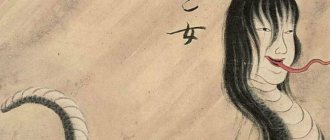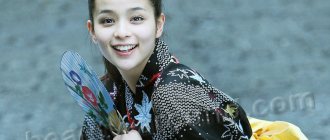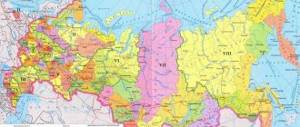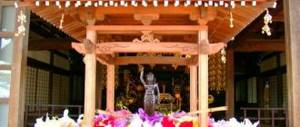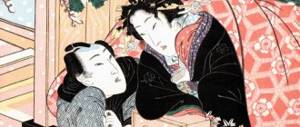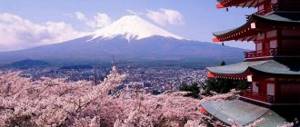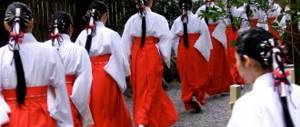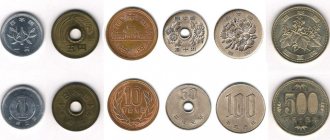Author: V_V_V
11 September 2021 11:40
Tags: Japan bedtime horror stories read Japanese urban legends
51546
16
The Japanese can trace the history of their culture back to ancient times, they trace their genealogies back centuries, and they have very old urban tales. Japanese urban legends (都市伝説 toshi densetsu) are a layer of urban legends based on Japanese mythology and culture. They are often terribly scary, perhaps this is precisely because of their hoary antiquity. Children's school horror stories and quite adult stories - we will retell some of them.
0
Source:
See all photos in the gallery
The Tale of the Red Room
0
Source:
For starters, a fresh horror story of the 21st century. It's about a pop-up window that pops up when you've been surfing the Internet for too long. Those who close this window soon die. An ordinary guy who spent a lot of time on the Internet once heard from a classmate the legend of the Red Room. When the boy came home from school, the first thing he did was sit down at the computer and start looking for information about this story. Suddenly a window appeared in the browser with the phrase “Do you want it?” on a red background. He immediately closed the window. However, it immediately appeared again. He closed it again and again, but it continued to appear. At some point, the question changed, the inscription read: “Do you want to get into the Red Room?”, and a child’s voice repeated the same question from the speakers. After that, the screen went dark and a list of names appeared on it, written in red font. At the very end of this list the guy noticed his name. He never appeared at school again, and no one ever saw him alive - the boy painted his room red with his own blood and committed suicide. We will not analyze the motives of such Japanese youth folklore; we will only note that the Japanese phenomenon of “hikikomori” or simply hikki, of course, did not arise out of nowhere. And this phenomenon is much more terrible than the innocent story about the Red Room (in Japan today there are almost one and a half million hikki: this is the name of voluntary hermits who self-isolate from society, live at the expense of their parents and do not get out from behind their computers). According to Michael Zielenziger, author of Shutting out the Sun: How Japan Created Its Own Lost Generation, hickey syndrome is similar to post-traumatic stress disorder, and according to other experts it is autism and Asperger's. If you are interested in this issue, read Ryu Murakami's book "Parasite".
×
"The Legend of the Dinosaur and the Monstrous Bird"
Many legends of Japan can be seen thanks to film adaptations. One such possibility is a dinosaur-bird movie directed by Junji Kurata at Toei Studios in 1977.
Genre: kaiju eiga - monster movie.
Plot. In the summer of 1977, fossilized eggs of ancient creatures - dinosaurs - are found in a crevice of Mount Fuji. For millions of years they slept in a dead, peaceful sleep, until natural disasters awakened them from their long hibernation. A series of terrible events followed: human deaths, beheaded horses, mass panic and, finally, a volcanic eruption.
"The Legend of the Dinosaur" from Japan hit the screens of the Soviet Union in 1979 and was a surprising success with audiences - about 49 million views.
Hitobashira - pillar people
0
Source:
Stories of pillar people (人柱, hitobashira), more specifically people buried alive in columns or pillars during the construction of houses, castles and bridges, have circulated throughout Japan since ancient times. These myths are based on the belief that the soul of a person immured in the walls or foundation of a building makes the structure unshakable and strengthens it. The worst thing, it seems, is not just stories - human skeletons are often found on the site of destroyed ancient buildings. During the aftermath of the earthquake in Japan in 1968, dozens of skeletons were discovered walled up inside walls - and in a standing position. One of the most famous legends about human sacrifice is associated with Matsue Castle (松江市, Matsue-shi), which was built in the 17th century. The castle walls collapsed several times during construction, and the architect was confident that the pillar man would help correct the situation. He ordered an ancient ritual to be performed. The young girl was kidnapped and, after proper rituals, walled up in the wall: the construction was completed successfully, the castle still stands!
LAI
Based on materials from websites
The main myths of ancient Japan are collected in two national epics: “Kojiki” (“Records of Ancient Deeds”), compiled in 712, and “Nihongi” (“Annals of Japan”), dating back to 720. Both epics were compiled at the command of rulers of the Yamato clan, who established themselves in power in the 7th century.
The most famous is the epic “Kojiki”. It consists of three parts, or scrolls. The myths of the first scroll are written down oral folk tales about the appearance of the first gods in the heavens and their creation of the Earth. These myths date back to the earliest period of Japanese history, called the Age of the Gods. The myths of the second and third scrolls are dedicated to the heroic deeds of heavenly descendants on Earth. Behind these actions one can already discern real episodes in the history of ancient Japan.
Mythological stories are also found in other ancient manuscripts, for example, in “Kogo Shuki” (“Excerpts from Ancient Stories”, 807), collected by the Imbe clan, in the manuscript “Fudoki” (“Records of Customs and Lands”), many such stories contain chronicle of Izumo province - “Izumo no kuni fudoki” (733). There are mythological subjects in “Sekou Nihongi” (“Continuation of the Chronicle of Japan”, 797).
The plots of ancient Japanese myths are partially found in the anthology of ancient Japanese poetry “Man'yoshu” (8th century) and in the religious court chants of norito, collected in the manuscript “Engi Shiki” (“Rules of Conduct of the Engi Era,” 10th century).
The myths collected in the Kojiki and Nihongi epics fall thematically into three large cycles. The first cycle contains myths about Takamagahara (High Sky Plain), where the first gods appeared. The second cycle of myths is associated with events that took place in the country of Izumo (present-day Shimane Prefecture). The god Susanoo was expelled from Heaven to this country for his misdeeds. And finally, the third cycle of myths is associated with the country of Tsukushi (modern Kyushu). It was here that the god Ninigi descended from Heaven to take control of Japan. Some researchers combine the first and third cycles of myths into a general cycle dedicated to the country of Yamato.
In the first cycle of myths dedicated to Takamagahara, the main ones are the myths about Izanagi and Izanami, Amaterasu and Susanoo. Izanagi and Izanami were the first Heavenly Deities we learned about. They were tasked with creating the earth's firmament from sea water and were given the Sacred Precious Spear. The drop that fell from the tip of this spear, condensed, formed the island of Onogoro, to which Izanagi and Izanami descended from Heaven and laid the foundation for life on Earth. They created eight islands that made up the territory of Japan. When Izanami passed away, Izanagi tried to rescue her from the Land of Darkness, but failed. Purifying himself from the filth of the Land of Darkness in the waters of the Tachibana River, he created the three main deities of Japanese mythology. From the washing of his left eye arose the sun goddess Amaterasu, from the washing of his right eye the moon god Tsukiyemi, and from the washing of his nose the god of elements and storms Susanoo.
The second myth of this cycle tells about the feud between Amaterasu and Susanoo for primacy in the heavenly divine pantheon. Amaterasu, frightened by the outrages of her brother, hid in the Heavenly Rocky Grotto, which is why night fell on earth. It was possible to lure Amaterasu out of the grotto only with the help of the sacred mirror of Yata. As punishment, Susanoo was expelled from Heaven to the country of Izumo, where he fought an eight-headed snake, defeated it and retrieved the sacred sword Kusanagi from its tail.
The second cycle of myths, associated with the country of Izumo, tells about the descendant of Susanoo - the earthly god Okuninushi, who ruled this country. First, he fought to maintain power with his brothers, and then with the goddess Amaterasu, who planned to send a heavenly governor to Izumo. This struggle ended with Okuninushi finally agreeing to accept the heavenly viceroy.
The third cycle of myths is dedicated to the descent from Heaven to Earth in the country of Tsukushi, the grandson of the goddess Amaterasu, the god Ninigi. Before this, Amaterasu presented Ninigi with three sacred relics of Heaven - the Magatama jasper pendants, the Yata mirror and the Kusanagi sword, which began to be revered on Earth as sacred relics of the Shinto religion and as regalia of imperial power. However, the first heavenly governor on Earth did not become famous for any heroic deeds; on the contrary, he even incurred the curse of the god Oyamatsumi, because of which the lifespan of heavenly governors on Earth began to be limited to the lifespan of ordinary mortals.
The first scroll of the Kojiki epic ends with the myth of Ninigi. The myths of the second and third scrolls of this epic already tell about the earthly affairs of the heavenly governors in Japan. Among them, the myths of Jimmu and Jingu stand out. Each of them already has certain historical justifications.
Jimmu, who, according to myth, was the great-great-grandson of Niniga, marched from Tsukushi to Yamato (present-day Nara Prefecture). His name opens a long list of rulers of Japan from the Age of the Gods; for the first time, dates of his reign appear: 660–585. BC. One of the most famous holidays in Japan, the Founding Day of the Empire (Kigansetsu), was associated with the subsequently calculated day of his accession to the throne. It was abolished during the occupation of the country after World War II, but was reinstated in 1966 as State Foundation Day (Kenkoku Kinenbi). The myth dedicated to Empress Jingu tells about her campaign of conquest in Korea, which she carried out at the command of the gods.
Japanese myths are in many ways extremely distinctive and original. For example, they do not contain a plot about the appearance of man on Earth. People, according to myths, became the descendants of deities who descended from Heaven to Earth. The myths of Japan introduce us to the fundamental concepts and values of Shintoism, the ancient national religion of the Japanese. They allow us to understand deeper and more specifically the psychology of the Japanese people, to get a clearer idea of the motivation for the behavior of the Japanese, their moral and spiritual values.
Kojiki (“Records of Ancient Deeds”) is the largest monument of ancient Japanese literature, one of the first written monuments, the main sacred book of the Shinto Triple Book, which includes, in addition to the Kojiki, “Nihongi” (“Annals of Japan”) and those burned during a fire in 645 “Kudziki” (“Records of past affairs”).
It is difficult to unambiguously determine the genre of this work, which is an example of the syncretism of ancient literature. This is a collection of myths and legends, a collection of ancient songs, and a historical chronicle.
According to the preface, the Japanese storyteller Hieda no Are interpreted and the courtier O no Yasumaro (d. 723) wrote down the mythological and heroic epic of his people, permeating it with the idea of \u200b\u200bthe continuity and divine origin of the imperial family. Work on the Kojiki was completed in 712, during the reign of Empress Genmei (707–715).
The author's list of “Kojiki” has not survived to this day. The oldest and most complete version of the fully preserved lists of all the Kojiki scrolls is the so-called “Book of Shimpukuji,” which received its name in honor of the Shimpukuji Temple in Nagoya, where it is kept. The creation of this version by the monk Kenyu dates back to 1371–1372.
Scroll 1. Chapter 1
When Heaven and Earth first opened, the names of the gods who appeared in Takama no hara - the Plain of High Heaven - were: Ame no minaka nushi no kami - the Ruler God of the Sacred Center of Heaven; behind him is Taka-mi-musubi-no kami - God of the High Sacred Creation; behind him is Kamimusubi no kami - the God of Divine Creation. These three gods appeared each on their own and did not allow themselves to be seen.
The names of the gods that came for them from what came to light like reed shoots, at a time when the earth had not yet emerged from infancy, and, like floating oil, rushed like a jellyfish [across the sea waves], were: Umasiyasikabi-hiko- zi-no kami - Youth-God of Beautiful Reed Shoots; behind him is Ame-no-tokotati-no kami - God Eternally Established in Heaven. These two gods also appeared each on their own and did not allow themselves to be seen.
The five gods mentioned above are special heavenly gods.
Scroll 1. Chapter 2
The names of the gods that appeared after them were: Kuni-no-tokotati-no kami - God Eternally Established on Earth; behind him is Toekumono no kami - the God of Abundant Clouds over the Plains. These two gods also appeared each on their own and did not allow themselves to be seen.
The names of the gods that came after them were: Uhijini no kami - God of Floating Mud, followed by Suhidaini no kami - Goddess of Sedimented Sand, her younger sister Tsunugui no kami - God of Solid Piles, followed by Ikugui no kami - Goddess of Life Melting Piles, younger sister; behind her is Oo-tonoji no kami - the God of the Great Chambers, behind him is Oo-tonobe no kami - the Goddess of the Great Chambers, the younger sister; behind her is Omodaru no kami - God of Perfect Appearance, behind him is Aya-kasikone no kami - Goddess, O Awe-Inspiring, younger sister; behind her Izanagi no kami - God Drawing to Himself, followed by Ideanami no kami - Goddess Drawing to Himself, the younger sister. From Kuni no tokotachi no kami to Ideanami no kami, the gods mentioned above , all together, are called the Seven Generations of Gods.
The two gods that appeared each on their own, which were mentioned above, are each called One Generation. Behind them, ten gods appeared in pairs, the two together, called One Generation.
Scroll 1. Chapter 3
Here all the heavenly gods gave their command to the two gods Izanagi no Mikoto and Izanami no Mikoto: “Finish the matter with this land rushing [on the sea waves] and turn it into firmament,” they said, bestowing a precious spear on them, and so instructed.
Therefore, both gods, having stepped onto the Heavenly Floating Bridge, sank that precious spear, and, rotating it, squelch-squish, kneaded [sea] water, and when they pulled [it out], the water dripping from the tip of the spear, thickened, became an island.
This is Onogorozima - the Self-Condensed Island.
Scroll 1. Chapter 4
[They] descended from heaven onto this island, erected a heavenly pillar, and built spacious chambers. Then [Izanagi] asked the goddess Izanami no Mikoto, his younger sister: “How is your body structured?”; and when he asked, “My body grew and grew, but there is one place that never grew,” she answered. Then the god Izanagi no Mikoto said: “My body has grown and grown, but there is one place that has grown too much. Therefore, I think, the place that has grown too much on my body, insert into the place that has not grown on your body, and give birth to a country. Well, shall we give birth?” When said so, the goddess Izanami no Mikoto “This [will be] good!” – answered.
Then the god Izanagi no Mikoto said: “If so, you and I, having walked around this heavenly pillar, will unite in marriage,” - so he said. So having agreed, immediately: “You go around to the right, I’ll go around to the left,” he said, and when, having agreed, they began to go around, the goddess Ideanami no Mikoto was the first: “Truly, a wonderful young man!” - said, and after her the god Izanagi no Mikoto: “Truly, a beautiful girl!” - said, and after everyone had spoken, [the god Izanagi] announced to his younger sister: “It is not good for a woman to speak first,” - so he announced. And yet [they] began the marriage affair, and the child that they gave birth [was] a leech child. This child was put in a reed boat and set sail.
Behind him Awashima - Foam Island was born. And they didn’t consider him a child either.
Scroll 1. Chapter 5
Then the two gods, after consulting, said: “The children that we have now given birth to are not good. “We need to present this before the heavenly gods,” they said, and so they went up together [to the Plain of High Heaven] and asked for instructions from the heavenly gods. Here the heavenly gods, having performed a magical act, expressed their will: “Because [the children were] bad, because the woman spoke first. Come down again and say it again,” they said. And then, they went back down and again, as before, walked around that heavenly pillar. Here the god Izanagi no Mikoto is the first: “Truly, a beautiful girl!” - said, after him the goddess Izanami no Mikoto, his wife: “Truly, a wonderful young man!” - she said. And when, having said this, they united, the child they gave birth to [was] the island of Awaji-no-ho-no-sa-wake.
Behind him, the island of Ie-no-futana, Double-named, was born. This island has one body, but four faces. Each face has its own name. Therefore, the country of Ie is called Ehime, the country of Sanuki is called Iieri-hiko, the country of Awa is called Oo-getsu-hime, the country of Tosa is called Takeeri-wake.
Behind him, the island of Okinomitsugo, the Three-Chinese, was born. Another name is Ame-no-oshikoro-wake.
Behind him, the island of Tsukushi was born. And this island, too, has one body, but has four faces. Each face has its own name. Therefore, the country of Tsukushi is called Shirahi-wake, the country of Toekuni is called Toehi-wake, the country of Hi is called Takehimukahi-Toyokujihine-wake, the country of Kumaso is called Takehi-wake.
Behind him the island of Iki was born. Amehitotsubashira is called differently. Behind him the island of Tsushima was born. Ame-no-sadaeri-hime is called differently. Behind him, Sado Island was born.
Behind him, the island of Oo-yamato-toeakizushima was born. Amatsumisora-toeakideune-wake is called differently. And so, because these eight islands were born before [others], they are called Oo-yashimaguni - the Country of the Eight Great Islands.
After this happened, they returned, and then the island of Kibi no Kojima was born. Takehikata-wake is called differently.
Behind him, the island of Azukijima was born. It's called Oo-no-de-hime differently.
Behind him, the island of Oo-shima was born. Oo-tamaru-wake is called differently.
Behind him, the island of Himejima was born. Amehitotsune is called differently.
Behind him the island of Thika was born. It is called differently Ame-no-oshi-o. Futago Island was born behind him. Amefutaya is called differently. From Kibi no Kojima Island to Amefugaya Island there are only six islands.
Scroll 1. Chapter 6
Having already completed the birth of the country, they now gave birth to the gods. And so, the name of the god born [by them] was Oo-kotooshi-o-no kami - God the Man of the Great Deed.
After him, Iwatsuchi-biko-no kami - the Youth God of the Rocky Earth - was born.
After him, Iwasu-hime no kami - the Virgin Goddess of Stony Sand - was born.
Behind her Oo-tohi-wake-no.kami - the God of the Great Entrance to the Dwelling was born.
After him, Ame-no-fuki-o-no kami - the God-Man of Heavenly Roofing - was born.
Behind him Oo-ya-biko-no kami - the Young God of the Great Roof was born.
Behind him, Kazamotsu-wake-no-oshi-o-no kami - the God-Husband of the Wind Averter - gave birth.
Behind him, the god of the sea - his name was Oo-wata-tsumi no kami - the God-Spirit of the Great Sea was born.
Behind him, the god of the straits - his name was Hayaakitsu-hiko-no kami - the Youth God of Early Autumn gave birth.
Behind him, Hayaakitsu-hime-no kami - the Virgin-Goddess of Early Autumn, gave birth to a younger sister.
From the god Oo-kotooshi-o-no kami to the goddess Akitsu-hime no kami, there are only ten gods.
These two gods, Hayaakitsu-hiko and Hayaakitsu-hime, divided among themselves, began to own - one the rivers, the other the seas. The names of the gods born [were] Awanagi no kami - God of Foam on Water, next Awanami no kami - Goddess of Foam on Water, next Tsuranagi no kami - God of the Bubbling Surface [Water], next Tsuranami no kami - Goddess of the Bubbling Surface [Water], next Ame-no-mikumari-no kami - Heavenly God of Water Distribution, next Kuni-no-mikumari-no kami - Earthly God of Water Distribution, next Ame-no-kuhizamochi-no kami - Heavenly God of Scooping Water, the following Kuni-no-kuhizamochi-no kami is the Earthly God of Scooping Water.
From the god Awanagi no kami to the god Kuni no kuhizamochi no kami, there are only eight gods.
Behind them, the god of the wind - his name was Shinatsu-hiko-no kami - the Youth God of the Wind gave birth.
Behind him, the god of trees - his name was Kukunoti no kami - the God-Spirit of the Trunks gave birth.
Behind him, the god of the mountains - his name is Oo-yama-tsumi no kami - God-Spirit of the Big Mountains gave birth.
Behind him, the goddess of the plains - her name was Kayano-hime no kami - the Virgin Goddess of the Grassy Plains gave birth. In another way, Nodeuchi no kami - the Deity-Spirit of the Plains is called.
From the god Shinatsu-hiko no kami to Nozuchi there are only four gods.
These two gods, Oo-yama-tsumi-no-kami and Nozuchi-no-kami, divided among themselves and began to own the mountains, the other the plains. The names of the gods born [were] Ame-no-sazuchi-no kami - Heavenly God of the Mountain Slopes, the following Kuni-no-sadauchi-no kami - Earthly God of the Mountain Slopes, the following Ame-no-sagiri-no kami - Heavenly God of the Mists in the Gorges, the next Kuni-no-sagiri-no kami - the Earthly God of the Mists in the Gorges, the next Ame-no-kurado-no kami - the Heavenly God of the Dark Crevices, the next Kuni-no-kurado-no kami - the Earthly God of the Dark Crevices , the next Oo-tomato-hiko-no kami is the Youth God of the Great Slope, the next Oo-tomato-hime no kami is the Virgin Goddess of the Great Slope.
From the god Ame-no-sazuchi-no-kami to the goddess Oo-tomato-hime-no-kami, there are only eight gods. The name of the born god behind them [was] Tori-no-ivakusubune-no kami - God of Boats Strong Like Rocks and Fast Like Birds from Kusu,” another name for Ame no torifune – Sky Bird-Boat.
After him Oo-getsu-hime-no kami - the Virgin Goddess of Great Food was born.
Behind her, Hi-no-yagihaya-o-no kami - God-Husband of Burning and Rapid Fire gave birth. In another way, Hi-no-kaga-biko-no kami - the Youth God of Luminous Fire is called. In another way, Hi-no-kagutsuchi-no kami - God-Spirit of Luminous Fire is called.
Because this child was born, the womb of [the goddess Izanami] was scorched, and she fell ill. The names of the gods, those who were born from her vomit, [were] Kanayama-biko-no kami - Youth-God of the Ore Mountain, the next Kanayama-bime-no kami - Maiden-Goddess of the Ore Mountain. The name behind them from the excrement of the appearing god [was] Haniyasu-biko-no kami - Youth-God of Viscous Clay, the next Haniyasu-bime-no kami - Maiden-Goddess of Viscous Clay. The name behind her from the urine of the goddess who appeared [was] Mitsuha-no-me-no kami - Goddess of Running Waters, the next Wakumusubi-no kami - Young God of Creative Powers. The child of this god is called Toeuke-bime no kami - the Virgin Goddess of Abundant Food. And so, the goddess Izanami no kami, because she gave birth to the god of fire, after all this, left. From Ame-no-torifune to the goddess Toeuke-bime-no kami, there are only eight gods.
In total, the god Izanagi no kami and the goddess Izanami no kami, both gods of the islands born together - fourteen islands, gods - thirty-five gods.
The goddess Izanami no kami gave birth to these [children] even before her departure. Only the island of Onogorozima was not born by her. And the leech child and Awashima Island were not considered children.
Scroll 1. Chapter 7
And so, the god Izanagi no Mikoto said: “My beloved wife-goddess! “I exchanged you for one and only child,” - so he said, and when, crawling in her heads, crawling at her feet, wept, the deity that appeared from his tears, under the shade of trees, on the hills that make up the foot of Mount Kaguyama, inhabited, is called Nakisawame no kami - the Weeping Goddess of the Swamps.
And so, [the god Izanagi] buried that retired goddess Izanami no Mikoto in Mount Hiba no Yama, [which stands] on the border between the country of Izumo and the country of Hahaki.
Here [the god Izanagi] drew the ten-cannon sword that girded him, and cut off the head of his son, Kagutsuchi no kami - God the Luminous Spirit. Then the blood that had stuck to the edge of the sacred sword fled onto the ridge of rocks, and the name of the god who appeared [was] Iwasaku no kami - God [of Thunder], Cleaving Rocks. Behind him is Nesaku no kami - the God of [Thunder], Cleaving the Foundations of [Rocks]. Behind him is Ivatsutsu-no-o-no kami - God-Man of the Stone Hammer. Three Gods.
Then the blood that stuck to the guard of the sacred sword that girded him also fled to the ridge of rocks, and the name of the god who appeared [was] Mikahayah-no kami - the God of Frightening Rapid Fire. Behind him is Hihayahi no kami - the Fire God of Rapid Fire.
Behind him is Takemikazuchi-no-o-no kami - the Valiant Frightening God-Man. Another name for Takefutsu no kami is the God of Valiant Sword Strike. Another name is Toefutsu no kami - God of the Mighty Strike with the Sword. Three gods.
Then the blood that had accumulated on the hilt of the sacred sword that encircled him leaked between the fingers of [the god Izanagi], and the name of the god who appeared [was] Kuraokami no kami - the Dragon God of the Gorges. Behind him is Kuramitsuha no kami - the God of Streams in the Valleys. From the god Iwasaku no kami to the god Kuramitsuha no kami, all eight gods described above are gods born from the sacred sword that surrounded him.
The name of the god that appeared in the head of the slain god Kagutsuchi no kami [was] Masakayama-tsumi no kami - God-Spirit of Steep Slopes. The name of the god who appeared behind him in the chest [of the god Kagutsuchi was] Odoyama-tsumi no kami - God-Spirit of the Kosogorov. The name of the god who appeared after him in the womb [of the god Kagutsuchi was] Okuyama-tsumi no kami - God-Spirit of the Depths of the Mountains. The name of the god who appeared after him in secret places [the god Kagutsuchi was] Kurayama-tsumi no kami - God-Spirit of Tesnin. The name of the god who appeared behind him in his left hand [the god Kagutsuchi was] Shigiyama-tsumi no kami - God-Spirit of the Wooded Mountains. The name of the god who appeared behind him in his right hand [god Kagutsuchi was] Hayama-tsumi no kami - God-Spirit of the Foothills. The name of the god who appeared behind him in the left leg [of the god Kagutsuchi was] Harayama-tsumi no kami - God-Spirit of the Plateau. The name of the god who appeared behind him in the right leg [of the god Kagutsuchi was] Toyama-tsumi no kami - God-Spirit of the Front Slopes.
From the god Masakayama-tsumi no kami to the god Toyama-tsumi no kami there are only eight gods.
And so, the name of the sacred sword with which he cut off [the head of the god Kagutsuchi] became Ame-no-ohabari - Heavenly Expanding Blade. Another name is Itsu-no-ohabari - the Sacred Powerful Blade.
Scroll 1. Chapter 8
Here [the god Izanagi], wanting to see his wife, the goddess Izanami no Mikoto, went after her to Yemi no kuni - the Land of Yellow Waters. And so, when [she] came out to meet him from the doors blocking the entrance, the god Ideanagi no Mikoto said: “My beloved wife-goddess! The country that you and I created is not yet fully created. Therefore, it must be returned to you,” he said. Then the goddess Izanami no Mikoto said in response: “It is regrettable [to me] that I did not come earlier. I tasted food from the hearth of the Land of Yellow Waters. And yet, my beloved hubby-god, I am embarrassed that you came here. Therefore, I will consult with the gods of the Land of Yellow Waters about my intention to return. Don’t look at me,” she said. Having said this, she went back to her chambers, and a lot of time passed, so that [her god Izanagi] became tired of waiting. And so, [he] pulled out a thick prong from the sacred shining comb that held a tuft of hair above his left ear, lit a fire and looked, entering, and [in her body] a countless number of worms swarmed and rustled, in the head of the Huge Thunder sat, in the chest Fire-thunder sat, in the stomach Darkness-thunder sat, in secret places Rupture-thunder sat, in the right hand [to the Earth] Striking thunder sat, in the left leg Rumble-thunder sat, in the right leg [Grass] Bending thunder sat, in total - eight gods of thunder appeared.
Then the god Izanagi no Mikoto became frightened at the sight of this and fled, and the goddess Izanami no Mikoto, his wife: “[You] have caused me shame!” - she said and set off the furies of the Land of Yellow Waters in pursuit of [him]. Then the god Izanagi no Mikoto took the black kazura net [from his head] and threw it, and immediately the fruits of wild grapes were born [from it]. While [the furies] were picking them up and devouring them, he ran further, and they again set off in pursuit, and then, this time, he pulled out a shining comb that held a tuft of hair above his right ear, and threw it, and immediately were born [from it] bamboo shoots. While the [furies] were pulling them out and devouring them, he ran on. Now those eight gods of thunder were given chase, and with them the army of the Country of Yellow Waters, numbering one thousand five hundred. Then [the god Izanagi] drew the sword of ten metacarpals that girded him, and, waving it behind his back, he ran further, and [they] followed him again, and when he reached the passage of Yemotsuhira, he picked three peaches [from the tree] that there was that passage, waited for [the army] and attacked [it], and all [they] ran back. Then the god Izanagi no Mikoto said to those peaches: “You! Just as they saved me, so must [you] save the human shoots of the earth that live in the Reed Plain-Middle Country, when they fall into the abyss of troubles and begin to grieve and complain!” - so he said and bestowed upon them the name Oo-kamu-zumi no Mikoto - Great Divine Gods-Spirits, so he called them. Finally, that goddess Izanami no Mikoto, the wife, herself set off in pursuit. Then [the god Izanagi] moved and blocked a rock that only a thousand people could handle, to that passage, and when [they] on both sides of that rock, standing opposite each other, dissolved [their] marriage, the goddess Izanami- but Mikoto said: “My beloved hubby-god! If you do this, I will strangle the human shoots in your country at a rate of a thousand a day,” she said. Then the god Izanagi no Mikoto deigned to say: “My beloved wife-goddess! If you do this, I will build one thousand five hundred houses a day for women in labor,” he deigned to say. Therefore, for every thousand people who certainly die a day, one thousand five hundred people are born a day.
And so, Izanami no Mikoto gave that goddess a name: Emotsu oo-kami - the Great Deity of the Land of Yellow Waters, she is called. And he also said: “Because you set off in pursuit, Chishiki no oo-kami - I name [you] the Great Deity of the Chase,” - so he said. And the rock with which the passage was blocked was called Chigaeshi no oo-kami - the Great God Who Turned Back [the Goddess], and also Sayarimasuemido no oo-kami - the Great God of the Door that Blocked the Entrance - that’s also what it’s called.
Therefore, the passage that was called Yemotsuhirasaka is now called the Ifuyazaka passage in the country of Izumo.
Page 1 of 2
deities mythology japan
Header photo: Demon God Bakan for KaijuX by LucasCGabetArts. Deviantart.com
If you find an error, please select a piece of text and press Ctrl+Enter.
Facebook Twitter Pinterest Google+ WhatsApp VKontakte
Onryo - vengeful spirit
0
Source:
Traditionally, Japanese urban legends are dedicated to terrible otherworldly creatures who, out of revenge or simply out of mischief, harm living people. The authors of the Japanese Encyclopedia of Monsters, after conducting a survey among the Japanese, were able to count more than a hundred stories about various monsters and ghosts that are believed in in Japan. Usually the main characters are onryo spirits, which became widely known in the West thanks to the popularization of Japanese horror films. Onryo (怨霊, resentful, vengeful spirit) is a ghost, the spirit of a deceased person, who has returned to the world of the living to take revenge. A typical onryo is a woman who died due to the fault of her villainous husband. But the ghost’s anger is not always directed against the offender; sometimes innocent people can be its victims. Onryo looks like this: a white shroud, long black flowing hair, white and blue aiguma (藍隈) makeup, imitating a deathly pallor. This image is often played out in popular culture both in Japan (in the horror films The Ring, The Grudge) and abroad. There is an opinion that Scorpion from Mortal Kombat is also from Onryo. The legend of onryo dates back to the end of the 8th century in Japanese mythology. It is believed that many famous Japanese historical figures who actually existed became onryo after death (politician Sugawara no Michizane (845-903), Emperor Sutoku (1119-1164) and many others). The Japanese government fought them as best it could, for example, building beautiful temples on their graves. It is said that many famous Shinto shrines are actually built to "lock" the onryo to prevent them from escaping.
Lovers under the pines
Matsue was the daughter of a poor fisherman; from an early age she loved to spend time under a large pine tree, watching the needles smoothly fall to the ground. One day she saw how the waves washed the unconscious body of a young man onto the shore. The girl pulled him out of the water and laid him on a soft carpet of pine needles. When the young man woke up, he tirelessly began to thank his savior. Teyo, that was the name of the young man, turned out to be a traveler, and he decided to complete his journey here, staying with Matsue and marrying her. The older the spouses became, the stronger their love was. Every night, when the moon rose, they walked hand in hand to their pine tree and remained there until dawn. In old age, their love was as strong as in youth, and the gods allowed the souls of Matsue and Teyo to return to the world again, to that very pine tree. On moonlit nights, their souls whisper to each other, sing, laugh and together collect fallen needles to the gentle song of the sea surf.
Okiku doll
0
Source:
In Japan, this doll is known to everyone; its name is Okiku. According to an old legend, the soul of the little dead girl who owned the doll lives in the toy. In 1918, a seventeen-year-old boy, Eikichi, bought a doll as a gift for his two-year-old sister. The girl really liked the doll, Okiku did not part with her favorite toy for almost a minute, she played with it every day. But soon the girl died of a cold, and her parents placed her doll on their home altar in memory of her (in Buddhist homes in Japan there is always a small altar and a figurine of Buddha). After some time, they noticed that the doll's hair began to grow! This sign was regarded as a sign that the girl's soul had moved into the doll. Later, in the late 1930s, the family moved and the doll was left in a local monastery in the city of Iwamizama. The Okiku doll still lives there today. They say that her hair is cut periodically, but it still continues to grow. And, of course, in Japan everyone knows for sure that the cut hair was analyzed and it turned out that it belonged to a real child. Believe it or not is everyone’s business, but we wouldn’t keep such a doll in the house.
Victim
Prince Yamato Takeru was one of the greatest warriors of old Japan. On all his travels he was accompanied by his faithful wife Ototachibana. In her youth she was beautiful, but during her numerous travels she lost her beauty: her skin was burned by the sun, and her clothes were dirty and patched. Tormented by the indifference of her husband, who spent his days caring for the country, she nevertheless continued to love him deeply and reverently. And her sacrifice was proof of this.
Crossing the Kazusa Strait, the forces of Yamato collided with the forces of nature: a large storm arose in which the ships could be completely destroyed. Unable to witness this and wanting to save her beloved husband, Ototachibana turned to the sea lord Ryujin with a prayer, asking him to take her life instead of Yamato's. Ototachibana threw herself into the sea, and the waves immediately swallowed her body. Takeru's army reached the shore safely, but the woman could not be saved. Yamato greatly regretted the way he treated his faithful wife. Too late he learned to admire her virtue. Until his death, he kept the memory of Ototachibana and was faithful to her.
Elizaveta Morokhina
Ibizu - little sister
0
Source:
This legend takes stories about annoying little sisters to a whole new level. There is a certain ghost that you can meet while walking alone at night (honestly, many of these urban legends can happen to those who wander around the city alone at night.) A young girl appears and asks if you have a sister, and it doesn't matter whether you answer yes or no. She will say: “I want to be your sister!” and after that he will appear to you every night. Legend has it that if you disappoint Ibiza in any way as your new big sibling, she will get very angry and start killing you little by little. More precisely, it will bring “twisted death.” Actually, Ibitsu is a famous manga by artist Haruto Ryo, published from 2009 to 2010. And it described a wise way to avoid problems with this obsessive person. The heroine of the manga sits in a pile of garbage and asks passing guys if they want a little sister. She immediately kills those who answered “no”, and declares those who answered “yes” to be her brother and begins to pursue. Thus, to avoid trouble, it is better not to answer anything. Now you know what to do!
"The Legend of Narayama"
Like the example described above, this title also belongs to the 1983 film. The director and screenwriter Shohei Imamura got to work, taking the stories of Shichiro Fukazawa as the basis for the plot.
Genre: drama.
Plot. Famine reigns in a small primitive village - 19th century. In the village, only the eldest sons are allowed to create families, while the younger ones are used as workers. Girls are sold or exchanged for things, such as salt. Babies are sometimes killed, and families who steal someone else's crops are buried alive.
The meaning of the Narayama legend in Japan is that the village has a truly creepy custom. Elderly people over 70 years of age should no longer receive food as they are considered “extra mouths to feed.” Therefore, the eldest son is obliged to take his father or mother on his shoulders and carry him to Mount Narayama, where the ancestor will remain to die of thirst and hunger.
Horror story about a ghost passenger who never pays
0
Source:
This is a strictly professional horror story for taxi drivers. At night, a man in black suddenly appears on the road, as if from nowhere (if someone appears, as if from nowhere, he is almost always a ghost, didn’t you know?), stops a taxi, and gets into the back seat. A man asks to be taken to a place that the driver has never heard of (“can you show me the way?”), and the mysterious passenger himself gives directions, showing the way exclusively through the darkest and scariest streets. After a long drive, with no end in sight to this journey, the driver turns around - but there is no one there. Horror. But that's not the end of the story. The taxi driver turns back, takes the wheel - but he can’t go anywhere, he’s already deader than dead. It seems that this is not a very ancient legend, right?
Do you need legs?
A Japanese legend tells of an old woman who may come up and ask: do you need legs? Despite the initially comical plot, everything ends in tears. There is no right answer. If you answer the question in the negative, the spirit tears off the person's lower limbs; if he agrees, he will sew a third one on him.
The only way out is to try to answer like this: “I don’t need it, but you can ask him about this.” The moment the enemy switches his attention, the person will have a chance to escape.
Hanako-san, the toilet ghost
0
Source:
A separate group of urban legends are legends about ghostly inhabitants of schools, or rather, school toilets. Perhaps this has something to do with the fact that the Japanese element of water is a symbol of the world of the dead. There are many legends about school toilets, the most common of which is about Hanako, the toilet ghost. About 20 years ago it was the most popular horror story among elementary school children in Japan, but even now it has not been forgotten. Every Japanese child knows the story of Hanko-san and every schoolchild in Japan, at one time or another, has stood in fear and hesitated to enter the toilet alone. According to legend, Hanako was killed in the third stall of the school toilet, on the third floor. That's where she lives - in the third stall of all school toilets. The rules of conduct are simple: you need to knock on the booth door three times and say her name. If everything is done politely, then no one will get hurt. She seems to be completely harmless if you don't disturb her, and you can avoid meeting her by staying away from her booth. I think there was a character in Harry Potter that looked a lot like Hanako. Remember Moaning Myrtle? She is the ghost of a girl who was killed by the Basilisk's gaze, and this ghost lives in the dressing room, albeit on the second floor of Hogwarts.
Kashima Reiko
Another scary legend in Japan is the story of Tek-tek, or Kashima Reiko, a girl whose body was run over by a train. From that moment on, the unfortunate woman wanders in the darkness, moving on her elbows, thus making a knock (hence the nickname Tek-tek).
If she notices anyone, and especially a child, she will pursue the victim until she is done with her. Typical methods of reprisal are either cutting him in half with a scythe, or transforming a person into the same creature as her.
Hell Tomino
0
Source:
"Tomino's Hell" is a cursed poem that appears in Yomota Inuhiko's book "Heart Like a Tumbleweed" and is included in the twenty-seventh collection of poems by Saizo Yaso, which was published in 1919. There are words in this world that should never be spoken out loud, and the Japanese poem “Tomino's Hell” is one of them. According to legend, if you read this poem out loud, disaster will happen. At best, you will get sick or injure yourself in some way, and at worst, you will die. Here is the testimony of one Japanese: “I once read “Tomino’s Hell” live on the radio show “Urban Legends” and mocked the ignorance of superstitions. At first everything was fine, but then something began to happen to my body, and it became difficult for me to speak, it was like suffocation. I read half the poem, but then I couldn’t stand it and threw the pages aside. That same day I had an accident and the hospital required seven stitches. I don’t want to think that this happened because of the poem, but on the other hand, I’m scared to imagine what could have happened if I had read it to the end then.”
Kaori
The girl, having entered high school, wanted to celebrate this event by piercing her ears. To save money, she decided to do it herself and at home. After a few days, her ear began to itch. Looking in the mirror, Kaori discovered a white thread in the earring and immediately realized that the itching was precisely because of it. When she pulled out the thread without a second thought, the light in front of her eyes immediately went out. It turned out that the cause of the high school student’s illness was not just a thread, but the optic nerve, the rupture of which led to blindness.
After such a tragedy, the girl began to persecute others. If the answer to her question “Do you have your ears pierced?” was yes, then she would bite them off for the unfortunate victim.
Cow's head - a horror story that cannot be written down
0
Source:
This short legend is so terrible that almost nothing is known about it. They say this story kills everyone who reads or retells it. Let's check it now. The legend of the cow's head has been known since the 17th century, although the exact origin remains a mystery. It is said that anyone who reads or hears the story will tremble with fear for days before finally dying. They also say that almost all written versions were burned many years ago. Given these facts, it would be better not to write about it on the Internet at all, and it would be better for you not to read further. This story has been known since the Edo era. During the Kan-ei period (1624-1643), its name was already found in the diaries of various people. And it’s just the name, not the plot of the story. They wrote about her like this: “Today I was told a horror story about a cow’s head, but I can’t write it down here because it’s too terrible.” Thus, this story does not exist in written form. However, it was passed down from mouth to mouth and has survived to this day. That's what happened recently to one of the few people who knows "Cow's Head." We further quote a Japanese source: “This person is an elementary school teacher. During a school trip, he told scary stories on the bus. The children, who were usually noisy, listened to him very carefully. They were really afraid. He was pleased with this, and at the very end he decided to tell his best horror story - “The Cow’s Head.” He lowered his voice and said, “Now I will tell you the story of the cow’s head. A cow's head is...” But as soon as he began to talk, a disaster occurred on the bus. The children were horrified by the extreme horror of the story. They shouted in one voice: “Sensei, stop it!” One child turned pale and covered his ears. Another roared. But even then the teacher did not stop talking. His eyes were empty, as if he was obsessed with something... Soon the bus stopped abruptly. Feeling that trouble had happened, the teacher came to his senses and looked at the driver. He was covered in cold sweat and was shaking like an aspen leaf. He must have slowed down because he couldn't drive the bus anymore. The teacher looked around. All the students were unconscious and foam was coming out of their mouths. From then on he never spoke of the Cow's Head. This "very scary non-existent story" is described in the short story "The Cow's Head" by Komatsu Sakyo. Its plot is almost the same - about the terrible story “Cow's Head”, which no one tells.
Myths about Izanagi and Izanami
The first five gods created Izanagi and the beautiful girl Izanami, his faithful companion, so that they created the Japanese land. Then the couple lived in heaven, on a crystal bridge. To find out how to go down, they threw a special weapon into the ocean, generously strewn with jewelry - a halberd, or naginata in Japanese, and from the splashes the first island called Onogoro was formed.
Izanagi and Izanami
Izanagi and Izanami went down to Onogoro and began to live there. At the same time, they created the eight great Japanese islands: Sado, Iki, Tsushima, Oki, Awaji, Ie, which later became known as Shikoku, Yamato - in the future Honshu, Tsukushi, later renamed Kyushu.
One day, the young people decided to have a wedding, and Izanami was the first to greet her groom, which was a violation of tradition - the man should speak first, not the woman. Despite this, the young people still got married.
The spouses became the first gods who could give birth to children-gods. Soon they had two children: Awashima and Hiruko, but they were ugly and stupid. Then Izanagi and Izanami put their children in a basket-boat and sent them out to sea.
They began to ask the gods what they had done wrong, why such punishment befell them, and the answer was that during a wedding the groom should speak first. Then the couple held the ceremony again, this time according to all the rules, and began to live happily.
The young people gave birth to a whole divine pantheon. Last of all, the fire god Kagutsuchi, or, as he is also called, Homusubi, was born. During childbirth, he caused multiple burns to his mother, which killed her.
According to Japanese myths, gods are also mortal, and Izanami ended up in the kingdom of the dead, called Yomi. Izanagi could not forgive his son for such an act, he brutally killed him, and several more deities arose from the blows.
Izanagi himself went to Yomi to save his beloved. There was terrible cold and pitch darkness, and at first he couldn’t even find his wife. When he found her, she agreed to return with him, but first she wanted to rest a little.
She asked her husband not to enter the bedroom, but he did not keep his word, and what he saw amazed Izanagi - his wife turned into half-rotting flesh, covered with ulcers and insects. He fled in horror from the kingdom of the dead, closing the door there with a huge cobblestone.
Izanami began to shout angrily that every day she would take a thousand souls to her kingdom for his actions. But the husband replied that then he would give birth to one and a half thousand people every day. This is how death and birth came to earth.
After returning from Yomi, Izanagi performed a cleansing ritual. While undressing, he dropped jewelry on the floor, while washing himself, drops of water fell to the ground, and gods appeared from them. There are three main ones:
- Amaterasu - the sun goddess, one of the most basic in the pantheon, her name translates as “with a beautiful face”, appeared from the left eye of Izanagi.
- Tsukuyomi, the lord of the night and the moon, was born from the right eye.
- Susanoo is the ruler of the sea, water, elements, rain, hail and snow, created from the nose.
Department store fire
0
Source:
This story is not a horror story; rather, it is a tragedy that has become overgrown with gossip, which is now difficult to separate from the truth. In December 1932, a fire broke out at the Shirokiya store in Japan. The employees were able to reach the roof of the building so firefighters could rescue them with ropes. When the women were about halfway down the ropes, strong gusts of wind began to blow open their kimonos, under which they traditionally wore no underwear. To prevent such dishonor, the women let go of the ropes, fell and were broken. This story supposedly caused major changes in traditional fashion, as Japanese women began wearing underwear under their kimonos. Although this is a popular story, there are many questionable aspects. To begin with, kimonos are draped so tightly that the wind cannot open them. In addition, at that time, Japanese men and women were relaxed about nudity, washing in joint baths, and the willingness to die rather than be naked raises serious doubts. In any case, this story is actually in Japanese firefighting textbooks, and the vast majority of Japanese people believe it.
Main deities
The Land of the Rising Sun is often called the land of 8 million deities, and so it is - there really are a lot of gods here.
Deity names can be very long: for example, the full name of the god Ninigi is actually eight words long.
However, there are five most important ones - they are called “Koto Amatsukami”, which means “Dear Deities of Heaven”. These five appeared at the very beginning of the universe.
The first three of them arose immediately after the creation of the heavens and the earth, on which they ascended from above. These three are called the High Deities from Heaven, the Solitary Gods, or the Deities of Creation. These include:
- Ame no Minakanushi is the central deity.
- Takamimusukhi - responsible for power and new conquests.
- Kamimusuhi - patronizes the miracle of birth.
Later, the earth and sea surfaces separated from each other, and two other divine beings appeared - Ame no Tokotachi and Umashi Ashikabi Hikoya. And even later, the beautiful spouses Izanagi and Izanami appeared, who became the creators of the islands of Japan. All these great seven became known as “Kamiye Nanae”, which means “7 generations of the era of deities”.
Aka Manto
0
Source:
Aka Manto or Red Cloak (赤いマント) is another "toilet ghost", but unlike Hanako, Aka Manto is an evil and dangerous spirit. He looks like a fabulously handsome young man in a red cloak. According to legend, Aka Manto can walk into the school girls' restroom at any time and ask: "Which cloak do you prefer, red or blue?" If the girl answers “red,” he will cut off her head and the blood flowing from the wound will create the appearance of a red cloak on her body. If she answers "blue", then Aka Manto will strangle her and the corpse will have a blue face. If the victim chooses any third color or says that he doesn’t like both colors, then the floor will open under him and deathly pale hands will carry him to hell. In Japan, this killer ghost is known variously as “Aka Manto” or “Ao Manto”, or “Aka Hanten, Ao Hanten”. Some people say that once upon a time, Red Coat was a young man who was so handsome that all the girls immediately fell in love with him. He was so frighteningly handsome that girls would swoon when he looked at them. His beauty was so stunning that he was forced to hide his face under a white mask. One day, he kidnapped a beautiful girl and she was never seen again. This is similar to the legend of Kashima Reiko, a female ghost with no legs who also haunts school toilets. She exclaims, “Where are my legs?” when someone enters the toilet. There are several possible correct answers.
Tales of Heroes
The main heroine of Japanese myths is the solar goddess Amaterasu, the ancestor of the emperor and the supreme Shinto deity. The myths telling about her life are key in ancient chronicles. The second main character is Susanoo, God of Hurricanes, Impetuous fellow. He is the younger brother of the solar goddess, exiled to earth after a quarrel with his great sister. Susanoo accomplished many feats, slaying a dragon with 8 heads, whose tail is the source of imperial ruling symbols (jasper, mirror, sword). All of them became gifts to the solar sister to restore her favor. Another brother, Amaterasu Tsukikame, killed the food goddess, angering his sister, who refused to ever see him.
Izanami, Izanagi are the first kami, people, sources of life on earth.
Rinzin, who rules over dragons, has the greatest wealth and power. He lives on the ocean floor in a crystal castle, and often appears in human form on earth. Rindzin has many children - beautiful green-eyed, black-haired sorcerers and sorceresses.
Daruma is the patriarch who created Zen and founded Shaolin. He is selfless and purposeful: from legend it is known that he tore out his eyelids so that they would not stick together during long meditations. The Japanese buy figurines of this personality when starting a complex business or hoping for a miracle.
From legends we know where the imperial regalia came from
Kuchisake-onna or woman with torn mouth
0
Source:
Kuchisake-onna (Kushisake Ona) or the woman with the torn mouth (口裂け女) is a popular children's horror story, especially famous due to the fact that the police found many similar reports in the media and their archives. According to legend, an unusually beautiful woman wearing a gauze bandage walks the streets of Japan. If a child is walking down the street alone, then she can come up to him and ask: “Am I beautiful?!” If he hesitates, as usually happens, then Kuchisake-onna rips off the bandage from his face and shows a huge scar crossing his face from ear to ear, a giant mouth with sharp teeth in it and a tongue like a snake. After which the question follows: “Am I beautiful now?” If the child answers “no”, then she will cut off his head, and if “yes”, then she will give him the same scar (she has scissors with her). The only way to escape Kushisake Onna is to give an unexpected answer. “If you say, 'You look average,' or 'You look normal,' she will be confused, giving you plenty of time to run away. The only way to escape Kushisake Ona is to give an unexpected answer. If you say “you look fine,” she will be confused and you will have enough time to run away. In Japan, wearing medical masks is not unusual, a huge number of people wear them, and the poor children are apparently afraid of literally everyone they meet. There are many possible explanations for how Kushisake Onna got her terrible shapeless mouth. The most popular version is that of an escaped madwoman who is so mad that she cuts her own mouth. According to an ancient version of this legend, many years ago there lived a very beautiful woman in Japan. Her husband was a jealous and cruel man, and he began to suspect that she was cheating on him. In a fit of rage, he grabbed a sword and cut her mouth, shouting “Who will consider you beautiful now?” She has become a vengeful ghost who haunts the streets of Japan, and wears a scarf over her face to hide her terrible scar. The US has its own version of Kushisake Onna. There were rumors of a clown who would appear in public restrooms, approach children, and ask, “Do you want to have a smile, a happy smile?”, and if the child agreed, he would take out a knife and cut their mouth from ear to ear. It seems that it was this clown smile that Tim Burton gave to his Joker in the Oscar-winning 1989 Batman. It was the Joker's satanic smile, brilliantly performed by Jack Nicholson, that became the trademark of this wonderful film.
Nure-onna
A lonely traveler wanders along a deserted sandy beach. Deeply immersed in his thoughts, he gazes unseeingly at the waves weakly beating against the shore. Now he will reach his favorite place, take off his clothes and plunge into the friendly sea. But suddenly his attention is attracted by a black spot on the water. Taking a closer look, the traveler realizes that this is a woman’s hair. With the last of her strength, the unfortunate woman turns her pale, pleading face towards him and slowly goes under the water. The traveler, without hesitation, rushes after the drowning woman. He quickly swims to the scene of the tragedy (strangely, it’s not deep here at all), and suddenly his body goes numb. A woman pops up nearby, her face no longer seems pleading to the traveler - it is angry and frightening, with frankly snake-like features. Something grabs the man's body - for a second it may even seem that the drowning woman is trying to save him. But no: the traveler’s body was wrapped not in arms, but in the huge slimy body of a snake. With a terrible smile, the woman bends over her cold victim and extends her long forked tongue towards her.
The unfortunate traveler was unlucky - he met an evil youkai named Nure-onna, which translated means “wet woman”. There are two varieties of this monster: the first looks like a snake with a woman's head, and the second is indistinguishable from a simple girl. Both are strong enough to simply attack people, but prefer to capture victims by cunning. Nure-onna in her female form always holds in her hand a bundle resembling a baby. She approaches the victim and asks him to hold the child for a while while he rests. Since the woman looks soaking wet and tired to death, she is usually not refused. As soon as the victim takes the package, it instantly turns into a heavy load that does not allow the person to budge. Here Nure-onna reveals her serpentine essence, grabs the victim and sucks all the blood out of her with her tongue. One of the retellings of this legend says that the monster does not kill people with pure intentions, but it seems that the Japanese themselves do not really believe in this. Another version also says that Nure-onna laughs terribly and to avoid immediate death, you must laugh with her. But even here no one promises you salvation: perhaps you will simply exchange immediate death for slow death.
Hon Onna - slayer of horny men
0
Source:
Hon-onna is the Japanese version of a sea siren or succubus, so she is only dangerous to horny men, but she is creepy nonetheless. According to this legend, a gorgeous woman wears a luxurious kimono that hides everything except her wrists and her beautiful face. She flirts with some dude who is fascinated by her and lures him to a secluded place, usually a dark alley. Unfortunately for the guy, this won't lead to a happy ending. Hon-onna takes off her kimono, revealing a creepy naked skeleton without skin or muscles - a pure zombie. She then embraces the hero-lover and sucks out his life and soul. So Hon-onna hunts exclusively for promiscuous males, and for other people she is not dangerous - a kind of forest orderly, probably invented by Japanese wives. But, you see, the image is bright.
